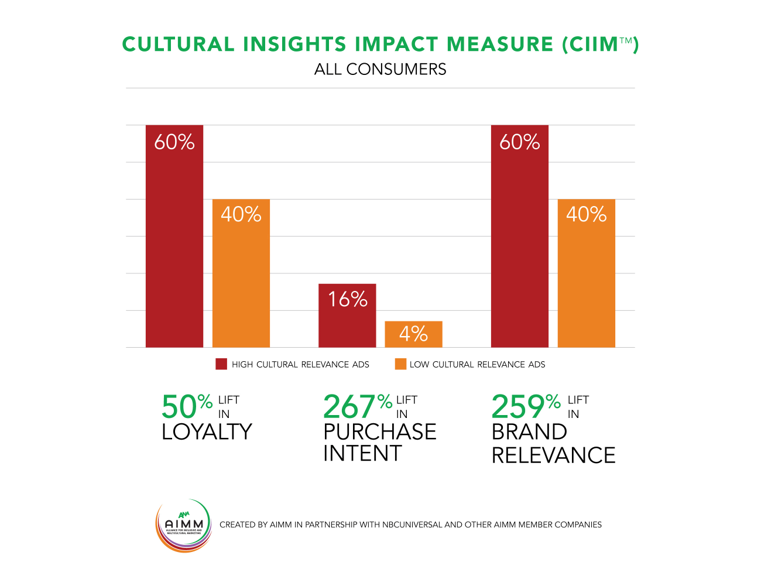The recent 2019 ANA Multicultural Marketing & Diversity Conference brought together hundreds of client-side multicultural marketing professionals across a wide spectrum of industries. Multicultural Excellence Awards were also presented to cutting-edge campaigns from major consumer brands.
Sadly, only 17 healthcare companies were present. Eli Lilly was the only pharma brand present. St. Jude Children’s Research Hospital and Tufts were the only hospital systems there, along with a handful of health insurers.
Here are five key takeaways from the conference that may help healthcare brand teams gain an understanding of why they must show up and step up.
1. Multicultural Marketing IS Marketing. Period.
Mark Pritchard, Chief Branding Officer at P&G erased any doubts with his statement, “If you are not doing multicultural marketing, you are not doing marketing.”
By this time next year, over 40% of the U.S. population will self-identify as multicultural: African American, Hispanic, Asian, or a combination of two or more races.
Multicultural and LGBTQ Americans’ collective spend rivals that of Germany, the world’s fourth-largest economy.
These two data points should be enough for any brand to justify investing in multicultural consumers. Yet multicultural media investment of $25.86 billion makes up only 5.2% of total U.S. advertising spend. And the numbers are much lower for healthcare.
All consumer marketing strategy should begin with a multicultural lens, independent of the category or therapeutic area, and only then be narrowed into appropriate segments in accordance with disease prevalence, etc.
2. Lack of Metrics is Not an Excuse
Toss out the tired refrain that there’s no way to measure the effectiveness of multicultural marketing and advertising strategies.
The cultural relevance and ROI of any campaign can be determined with the Cultural Insights Impact Measure (CIIM). This measure identifies the effectiveness of ads and shows how inclusivity and cultural relevance in advertising resonates with key multicultural segments.
The CIIM is the first measure to quantify the impact an ad has on diverse consumers’ brand loyalty, purchase intent, and sales opportunity.
The eight attributes identified as culturally relevant are inclusion, respect, cultural values, authentic portrayals, positive reflections, role models, celebration, and cultural pride. A score of 100 means consumers find the ad indifferent to their culture; 200 means they find it extremely culturally relevant. Ads scoring over 160 demonstrated a 50% higher purchase intent compared to ads scoring in the bottom two quartiles.
 To see what multicultural marketing excellence looks like, here are 2019’s six most effective ad campaigns, as scored using CIIM.
To see what multicultural marketing excellence looks like, here are 2019’s six most effective ad campaigns, as scored using CIIM.
3. Storytelling Matters More Than Ever
People are less likely to align themselves with a brand based solely on a value proposition. Their engagement with a brand is increasingly based on what it stands for.
In 2016, P&G’s “The Talk” illustrated the difficult conversation black parents must have with their children to keep them safe in a prejudiced world. This year the campaign evolved with the award-winning “The Look.” The new ad follows P&G’s efforts to raise awareness of unconscious bias. It follows a black father through an ordinary day of painful discriminatory experiences, culminating in a brilliant depiction of why this man is entitled to respect.
Realistic and impactful storytelling is becoming the norm for campaigns intended to fully engage target audiences. The pharma industry should be replete with these stories.
4. Permission Must Be EARNED
Just speaking to or at diverse consumers is not be enough to engage them. Multicultural consumers have an increased sensitivity to marketing that is created for them but doesn’t actually “get” them.
Karla Evans-Davis, Head of Integrated Marketing & Media for Ulta Beauty, demonstrated Ulta’s powerful “Possibilities Are Beautiful” branding campaign. Yet her most memorable revelation is how they’ve gained permission to address all skincare and makeup users—all ages, gender identifications, sizes, including people with disabilities by hiring them. The executive team is 50% female, as is the board.
She also noted that, “As we’ve built our brand efforts, we’ve tried to infuse an action-oriented mindset into our strategy from day one, so it’s never been just a communication strategy, but a way of doing business.”
5. True Leaders are Moving Well Beyond Diversity
According to a Washington Post analysis, 40% of new hires ages 24-59 are people of color. Having a diversity mindset embedded in the organization is the price of entry. Potential talent wants to join organizations that are inclusive of them and their experiences.
More sophisticated consumer brand marketing teams with diverse members are moving well beyond “Hispanic,” “Latinx,” or “African American” segment strategies. They are now sub-segmenting within sub-segments to arrive at untapped opportunity.
It may seem risky to move from the “central casting” approach so common in healthcare advertising, inserting images of people of various races and skin tones within one campaign. But if pharma brands don’t make that leap, they risk being “wallpaper brands” to not just 40% of the U.S. population, but to all of it.
Healthcare and pharma brands play critical roles in the lives of increasingly diverse America. Our entire marketing strategy has to become multicultural marketing if we’re to rise above the bar. But we don’t know how high the bar is if we don’t show up.









